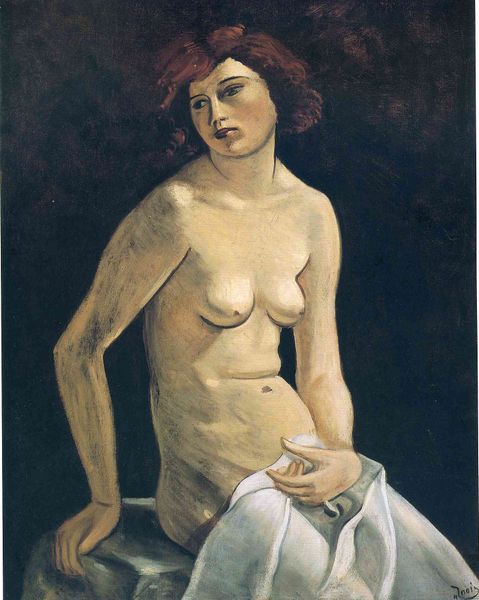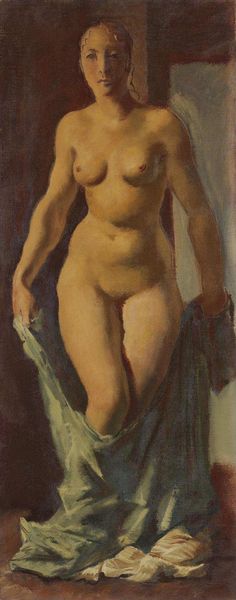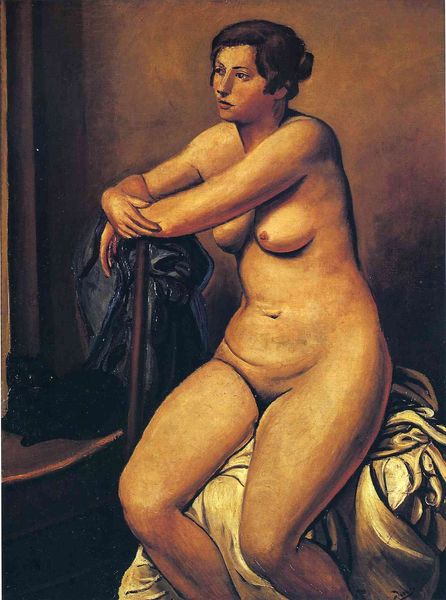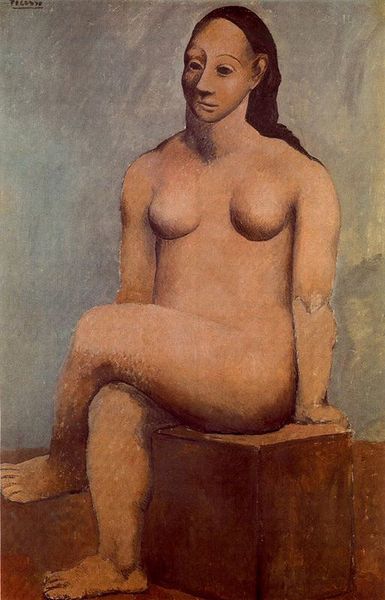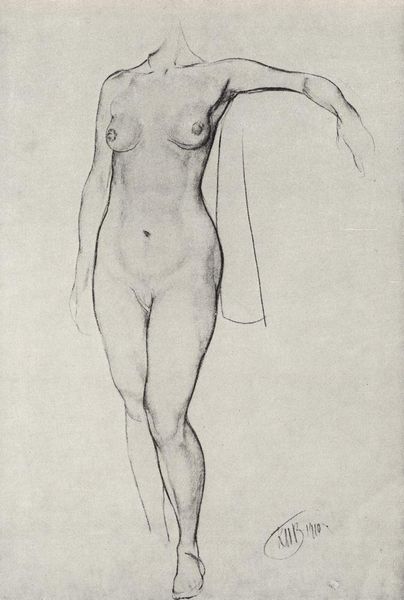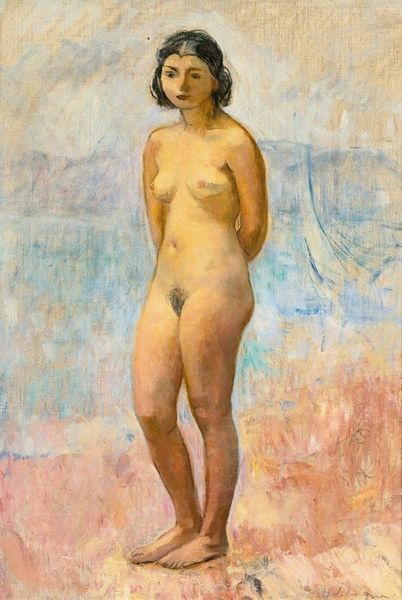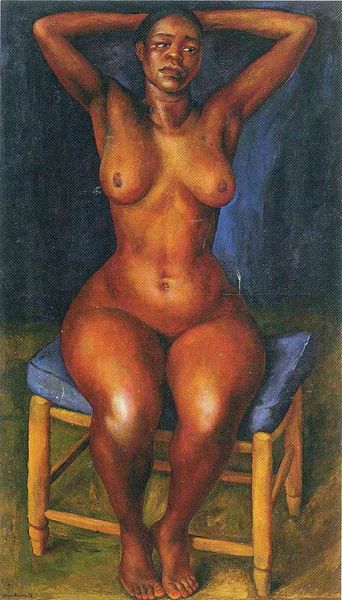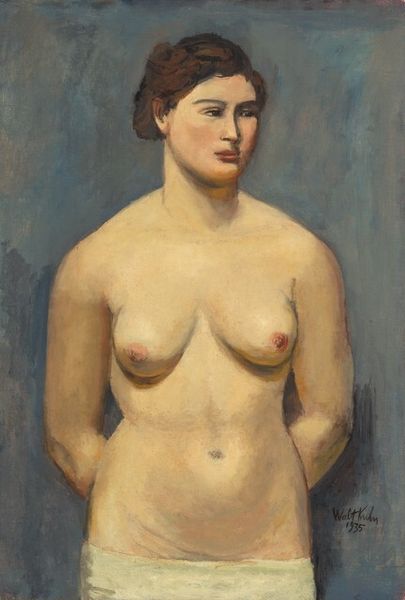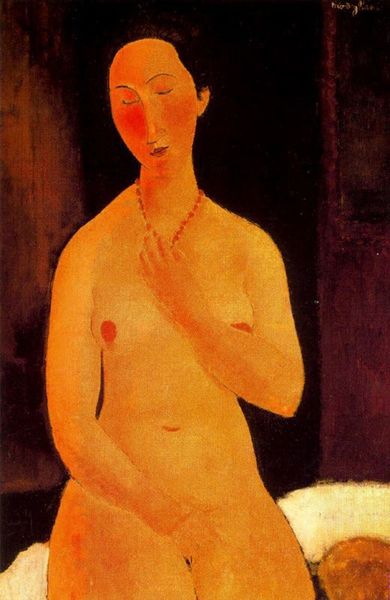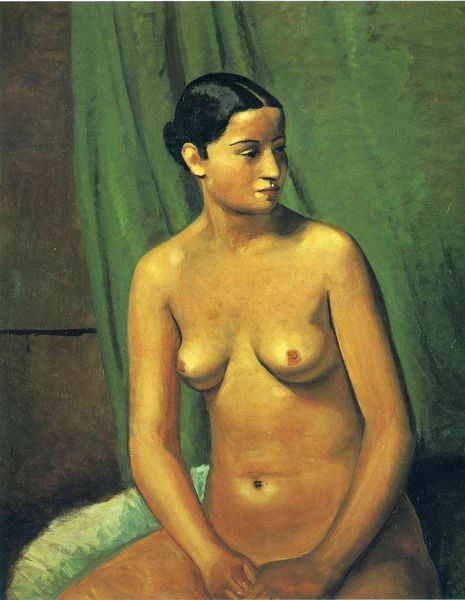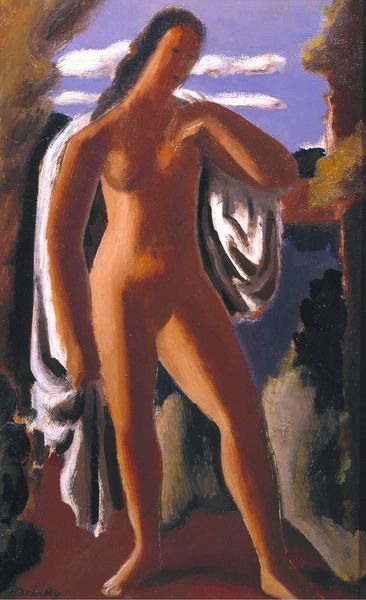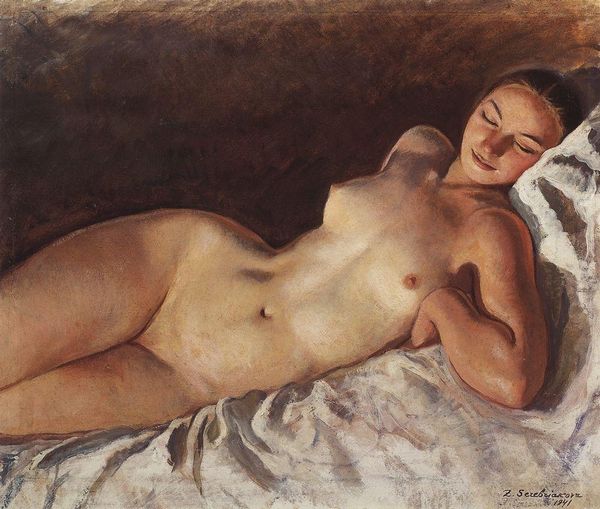
painting, oil-paint
#
portrait
#
painting
#
oil-paint
#
figuration
#
female-nude
#
human
#
nude
#
portrait art
#
modernism
Dimensions: 174 x 124 cm
Copyright: Andre Derain,Fair Use
Editor: We’re looking at André Derain's "Female nude holding apple," painted in 1941 with oil paint. The pose and color feel traditional, almost like an old master painting. What strikes you most about this piece? Curator: What strikes me is the apple. In 1941, with the Nazi occupation of France, the symbolism takes on new layers. Consider the visual history of the female nude, often an objectified form, now imbued perhaps with resistance through the biblical allusion of the apple—a symbol of knowledge and transgression against authoritarian control. What do you make of that, situated in that specific time? Editor: So, you're saying the act of portraying a nude female holding an apple during wartime wasn't just aesthetic, it was a statement? A subversive act, even? Curator: Precisely! The male gaze, the canon, everything is being questioned here. Remember that during times of oppression, art becomes a vital language. How does Derain's style of modernism here reflect or reject prior approaches to similar subject matter? Editor: I see that the proportions are a little distorted, the background is simplified...almost as if he’s pushing back against the academic tradition in favor of something rawer, more honest. So it’s not just about the apple, but about Derain choosing to depict the figure in a non-idealized way that rejects the dominant Nazi obsession with an 'Aryan' ideal? Curator: Exactly. And within this choice we have a new reading. Can we reclaim her image? Is it empowerment, is it commodification? The questions must remain open to make this artwork relevant today. Editor: This painting gives us so much to unpack. It really makes you think about the power of art in times of crisis and about the ongoing dialogue of female representation. Curator: Yes, and by viewing Derain's painting through an intersectional lens, we can appreciate not just its aesthetic qualities but its potent historical and cultural commentary as well.
Comments
No comments
Be the first to comment and join the conversation on the ultimate creative platform.
